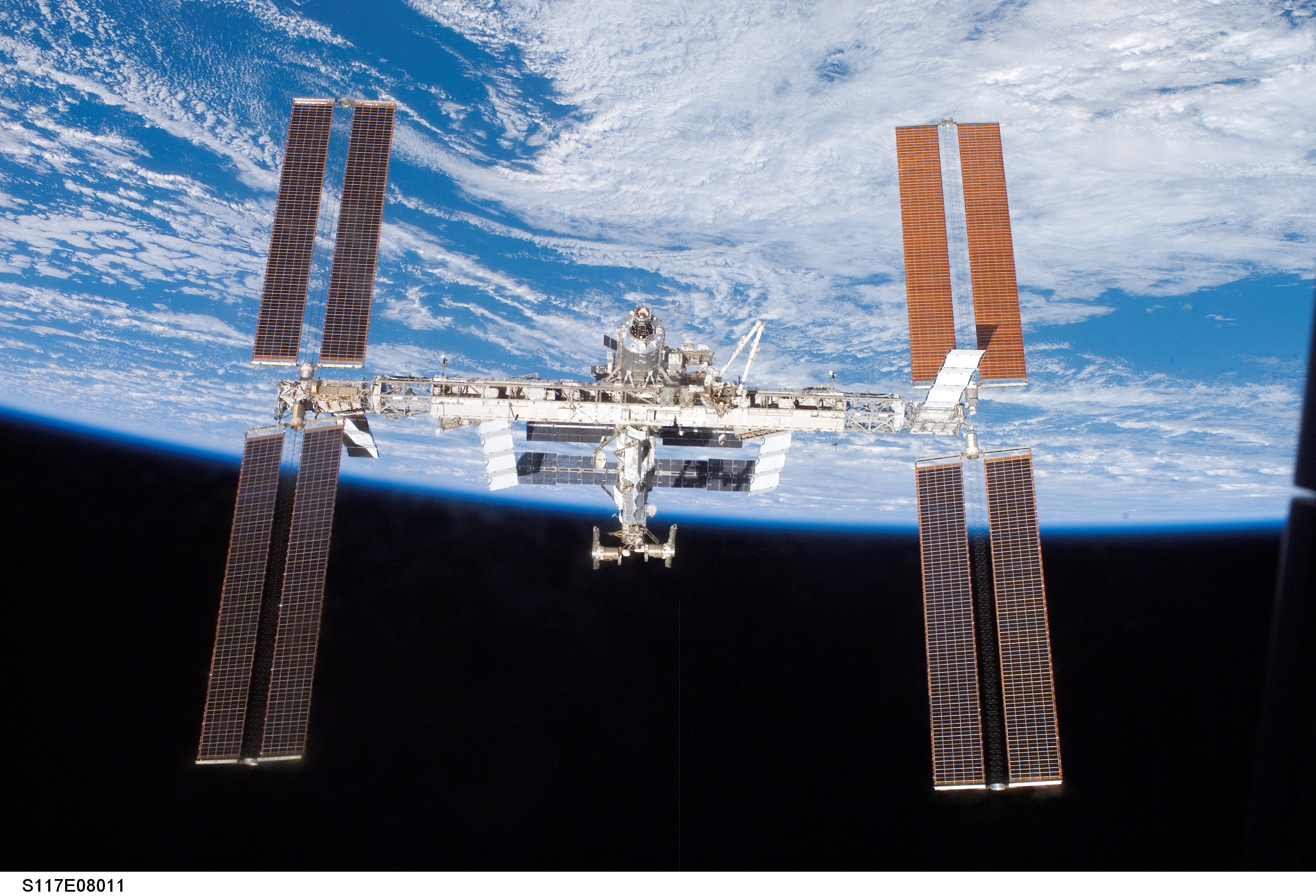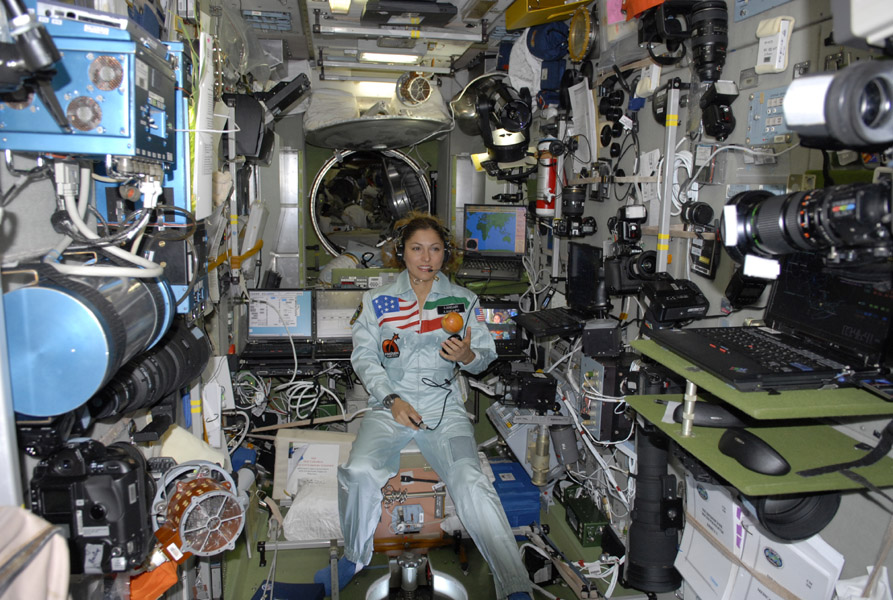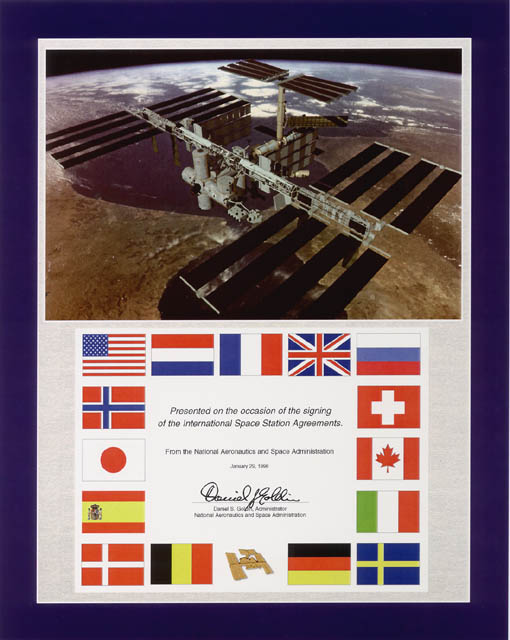
 http://apod.nasa.gov/apod/image/0706/iss_sts117_big.jpg
http://apod.nasa.gov/apod/image/0706/iss_sts117_big.jpgThe International Space Station is the largest and most complex international scientific project in history. It is going to be complete just after the turn of the century. Led by the United States, the International Space Station draws upon the scientific and technological resources of 16 nations: Canada, Japan, Russia, 11 nations of the European Space Agency and Brazil. The completed International Space Station will have a mass of about 1,040,000 pounds. It will measure 356 feet across and 290 feet long. The station will be in an orbit with an altitude of 250 statute miles with an inclination of 51.6 degrees. The orbit also provides excellent Earth observations with coverage of 85 percent of the globe and over flight of 95 percent of the population.

http://www.anoushehansari.com/faqs/grax/images/24d%20Inside%20ISS.jpg

http://www.nasa.gov/images/content/149193main_ISS_Agreements_low.jpg
The mission of the International Space Station is to enable long-term exploration of space and provide benefits to people on Earth. With six state of the art laboratories, the Space Station will be the premiere research facility in space, four time larger and more capable than any previous space station. People are hoping that it will allow for advancements in medicine, technology and science. The frist crew of astronauts and cosmonauts started living on the ISS in October 2000. The crews do experiments to learn how people and other creatures are affected by living in space. They also learn how to make things in space, like larger crystals or rounder ball bearings. The crew also spend time studying Earth and figuring out what equipment is best to use for long trips in space. Each crew spends about six months on the ISS before returning to Earth.